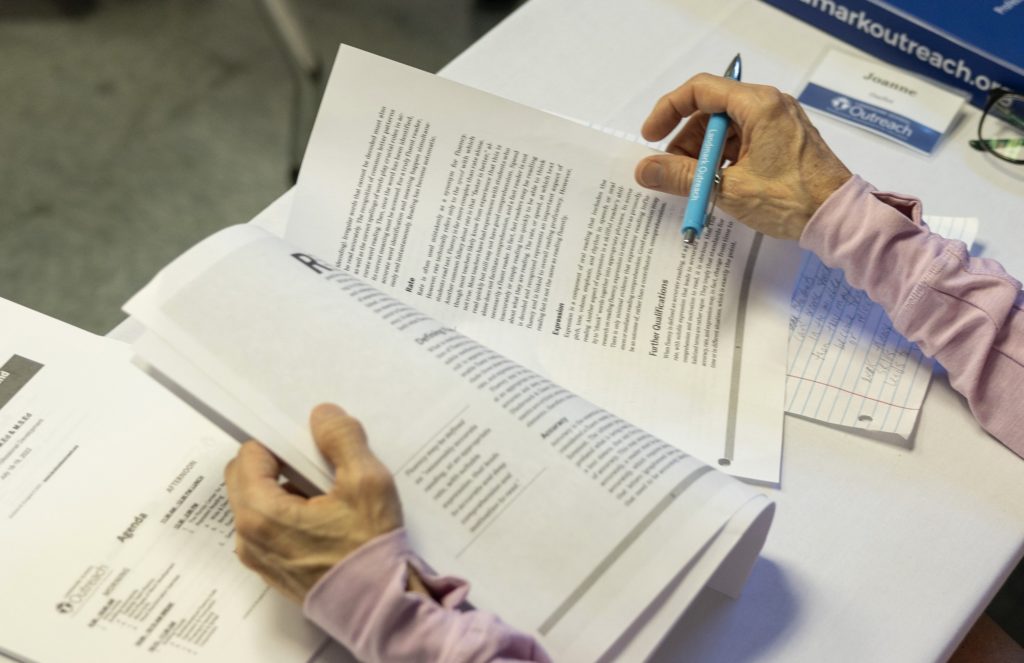Developed by Phillip Gough and colleagues (Gough & Tunmer, 1986; Hoover and Gough,1990; Juel, Griffith, & Gough,1986) in 1986, the Simple View of Reading was one of the first models of reading development that explored the process of reading acquisition. Their research asserted that the endgame of reading is comprehension, and they outlined that in order to understand what is read, the ability to decode words and the ability to understand the language being used must be intact.
They presented their idea using an equation:
R = D x LC
Reading comprehension = Decoding x Linguistic comprehension
Decoding refers to word-level reading and linguistic comprehension refers to the ability to understand the spoken language in which the words are written.
When students are able to decode, they engage their cipher skills and word-specific knowledge. Cipher skills reflect an understanding of the code of the language and how to use that code to read words. The cipher, or code for reading, requires the understanding that words are built of separate and distinct sounds and that those sounds are represented by letters. For example, the word cat has three phonemes or sounds: /c/ /a/ /t/, and each of these sounds is represented by a letter. Cipher skills serve as the basis for all other reading skills, and it is essential that these skills are fluid and effortless.
Additionally, word-specific knowledge, or known sight words, is required to decode. Word-specific knowledge incorporates and builds on cipher skills, and these two overlapping skills work together to build sight word vocabulary. This vocabulary develops through understanding the language’s cipher and having experiences with, and exposures to, words. It is important to note that research (Cunningham, 2006; Laing & Hulme, 1999; Nation, Angell, et al., 2007; Rack et al., 1994) shows that word-specific knowledge is not based on visual memory, but rather on understanding the cipher and recognizing and knowing the patterns in language.
In addition to the skills required to simply read words, there are many other skills that are necessary in order to understand what reading is, also know as linguistic comprehension. Noted literacy expert, David Kilpatrick (2015) highlights that vocabulary, background, and syntactical-grammatical knowledge are essential pieces of reading comprehension as they provide the framework for understanding and contextualizing what is read. Attention and memory also play an important role in helping students to understand text (Kilpatrick, 2015, p. 73).
Kilpatrick writes regularly about the efficacy of this model in understanding both reading acquisition and reading difficulty. He says: “If a student can quickly and effortlessly read the words in a given passage and if that student can understand that same passage when it is read to her, it follows that the student should be able to comprehend that passage when she reads it to herself” (2015, p. 46). Kilpatrick’s explanation delineates the inherent simplicity of this model and the importance of both decoding skills and linguistic comprehension. Although simple on the surface, closely examining reading difficulty using the Simple View of Reading as a framework can bring essential nuance to a student’s struggle with literacy and offer a more pointed explanation other than simply acknowledging that reading is difficult. It can work to help educators discover where in the equation the process is breaking down for a student and give an entry point for remediation.
References
- Gough, P.B. & Tunmer, W.E. (1986). Decoding, reading, and reading disability. Remedial and Special Education, 7, 6–10.
- Kilpatrick, D.A. (2015) Essentials of Assessing, Preventing, and Overcoming Reading Difficulties. Hoboken, NJ: John Wiley and Sons, Inc.



